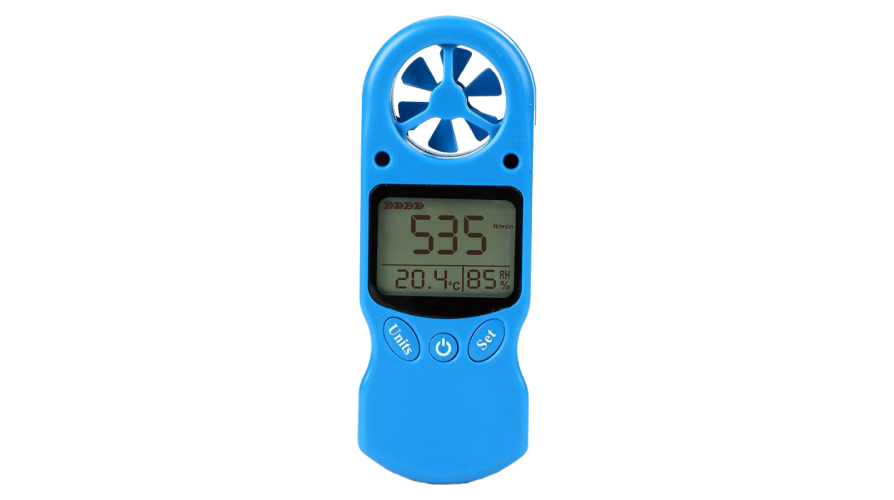Why an Anemometer is Vital for Your Environmental Information Collection
Why an Anemometer is Vital for Your Environmental Information Collection
Blog Article
All You Required to Know Concerning Anemometers: How They Function, Why They Matter, and Where to Use Them
Anemometers, however often overlooked in the world of clinical tools, play an important duty in different areas, using useful understandings right into wind rate and air movement patterns. Recognizing the technicians behind these tools is necessary for any individual seeking to harness the power of this information. From meteorologists tracking weather patterns to designers designing frameworks with wind lots in mind, the applications of anemometers are significant and varied. As we explore the ins and outs of anemometer technology, we will discover the internal workings of these gadgets, their relevance, and the vital considerations when choosing the appropriate anemometer for particular applications.

Anemometer Essentials
An essential tool used to gauge wind speed and instructions, the anemometer plays a vital role in weather forecasting and different sectors. An anemometer normally consists of 3 or 4 cups that rotate in the wind, a vane that points right into the wind, and sensors to track the motions or turnings.
There are different sorts of anemometers readily available, including cup anemometers, vane anemometers, hot-wire anemometers, and sonic anemometers, each with its special features and applications. Cup anemometers are commonly utilized for standard wind speed dimensions, while vane anemometers are preferred for directional measurements. Hot-wire anemometers appropriate for low airspeeds, and sonic anemometers are excellent for high-precision measurements in research study and commercial settings. Comprehending the essentials of anemometers is important for precise wind information collection and analysis throughout various industries.
Concepts of Anemometer Operation
Building on the fundamental understanding of anemometer essentials, the principles of anemometer operation elucidate the mechanics behind wind speed and instructions dimensions. Cup anemometers, for instance, have 3 or even more mugs that catch the wind, triggering them to spin much faster as the wind speed rises. Hot-wire anemometers count on a heated cord that cools down as wind passes over it, with the rate of cooling down figuring out the wind speed.
Significance of Anemometers
Anemometers play a critical duty in measuring wind speed and direction, offering important data for weather condition forecasting, climate studies, environmental monitoring, and aeronautics procedures. Meteorologists count on anemometers to collect precise wind data, helping them understand weather patterns, forecast tornados, and problem timely warnings to the public. Wind ranch drivers make use of anemometers to examine wind conditions and make the most of electrical energy manufacturing from wind turbines.
Applications Across Numerous Industries
Applications of anemometers extend throughout diverse sectors, showcasing their convenience and energy beyond meteorology. In the renewable resource sector, anemometers play an important function in evaluating wind problems for wind ranch positionings, ensuring optimal energy manufacturing. Industries like building why not find out more and mining use anemometers to check wind speeds, crucial for safety and security procedures, specifically when operating at elevations or in open-pit mines where strong winds can present hazards. Anemometers are likewise integral in the air travel sector, aiding pilots in comprehending airspeed and wind instructions for safe take-offs and touchdowns. The maritime sector gain from anemometers for ship navigation, assisting seafarers anticipate weather condition adjustments and adjust routes appropriately. In farming, anemometers assist farmers in taking care of crop spraying by supplying real-time information on wind speed to prevent drift. Anemometers find applications in Heating and cooling systems to maximize air movement and boost energy efficiency in buildings. The diverse use situations of anemometers emphasize their relevance throughout various industries, highlighting their essential function in improving functional security and efficiency (anemometer).

Choosing the Right Anemometer for Your Requirements
Picking the appropriate anemometer tailored to your particular needs is essential for getting accurate wind speed and direction measurements. When selecting an anemometer, think about variables such as the desired application, required measurement range, environmental conditions, and desired functions. For general functions, a mug anemometer appropriates for gauging wind rate, while a vane anemometer offers wind instructions my company information. Hot-wire anemometers are optimal for low airspeed dimensions, and ultrasonic anemometers use high precision and resilience.

Final Thought
In conclusion, anemometers play a vital role in measuring wind speed and direction throughout various markets. Recognizing the principles of anemometer procedure is vital for picking the ideal tool for particular needs. From weather forecasting to aviation, anemometers are important devices for collecting accurate information and making certain safety in various applications. It is essential to consider the relevance of anemometers in order to make informed decisions when picking the most ideal device for determining wind conditions.
There are numerous types of anemometers available, including mug anemometers, vane anemometers, hot-wire anemometers, and sonic anemometers, each with its unique features and applications. Cup anemometers are frequently utilized for fundamental wind rate measurements, while vane anemometers are favored for directional dimensions. Hot-wire anemometers are ideal for low airspeeds, and sonic anemometers are excellent for high-precision dimensions in research and industrial settings.Building on the foundational understanding of anemometer fundamentals, the principles of anemometer operation illuminate the auto mechanics behind wind rate and instructions dimensions. For basic functions, a mug anemometer is appropriate for determining wind speed, the original source while a vane anemometer supplies wind direction data.
Report this page